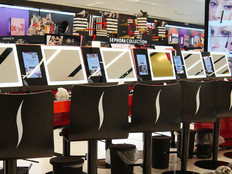What Retailers Must Know to Successfully Launch AI and AR
For retail IT leaders, it’s become difficult to ignore two emerging technology trends: artificial intelligence and augmented reality.
Hardly a week goes by without a headline on how retailers can use AI and AR to engage with customers and make their shopping experiences more immersive and personalized. Just last week, clothing chain Zara said it would introduce AR displays in its stores starting in April. Reuters reports that it will show “models wearing selected looks from its ranges when a mobile phone is held up to a sensor within the store or designated shop windows, with customers able to click through to buy the clothes.”
Before retailers make significant investments in these emerging technologies, they need to ensure that have defined a problem they want to solve with the new tech, retailers and IT experts say. For AI, in particular, retailers need to collect enough usable data to make the solutions worthwhile and also think about how it will improve the shopping experience.
And for AR, retailers should target it for specific use cases where customers would benefit from having digital information on products overlaid in the real world.
SIGN UP: Get more news from the BizTech newsletter in your inbox every two weeks!
Retailers Must Figure Out How AI Can Be Useful
Analysts think AI is one of the biggest trends to watch in retail this year. Katrina Gosek, senior director of digital customer product strategy at Oracle, tells BizTech that a "constant holy grail" that retailers are seeking is to personalize and optimize products, inventory, content and offers. She says artificial intelligence will be a major part of that.
Trevor Sumner, CEO of Perch Interactive, knows a thing or two about personalization in retail. Perch uses sensors and computer vision technology to detect products customers have picked up off shelves. Then, customized content about those products is sent via the cloud to an off-the-shelf display unit, especially for products that need explanation or can be explored or customized via digital content. Perch can gather data about how many customers interacted with a product, which products customers are interacting with and how long they were doing so. Perch works with brands such as Kate Spade and Sephora.
AI has the potential to reshape retail, Sumner says. “Users want personalized everything. I just think it’s hard.”
The first challenge with implementing any AI solution is getting access to clean and machine-readable data, Sumner and other experts say. Sumner says he sometimes talks to retailers and they say it would take them months to gather all of their sales data. Amazon looks at that data every minute, he notes.
AI “requires data” and it needs to be implemented in stores in a smooth way that does not seem intrusive or creepy, according to Sumner. “The success of technology depends on it being seamlessly integrated into the shopping experience,” he says.
Andy Done, director of data engineering at online fashion retail platform Farfetch, said during a panel discussion at the Retail Week Live event in London earlier this month that AI “absolutely relies on us having high-quality data feeds and paying attention to the structure of data,” and that retailers “shouldn’t expect to drop AI on top of a big data mess,” according to Computer Weekly.
AI can help retailers in their supply chains, logistics and marketing, Done said, but it also can enable human retail workers to have deeper engagement with customers by providing information on a customer’s past order history and likely preferences, for example. “Personal customer experience in physical stores is absolutely critical and the technology, including things such as AI, should be taking care of all the stuff behind the scenes to allow that interaction to take place,” Done said.
Yet Luis Perez-Breva, who directs the MIT Innovation Teams Program, says in a Quartz article that there is too much hype around AI in retail. He notes that chatbots and digital assistants such as Amazon Alexa are not AI but “just sophisticated programs built on top of machine learning, natural language processing and statistical algorithms.”
“There’s also a lot of hyperbole around machine learning and analytics that conceals a people problem,” he writes. “Used that way, machine learning needs vast amounts of data that needs to be formatted and cleaned for use. Computers aren’t good at automatically cleaning data; humans are.”
AI can help make supply chains more efficient and help make sales associates more intelligent, Perez-Breva says. Currently though, retailers “confuse analyzing large amounts of data and profiling customers for artificial intelligence. Throwing data at machines doesn’t make machines (or anyone) smarter.”
In the future, though, retail workers “could use AI tools that help them become instant experts about a product, and as they do, feed data back to those AI tools about how customers respond to products,” Perez-Breva writes in the Quartz article. “In that ideal future, the AI would help forecast product improvements to sell back to producers, generate recommendations on where to stock and display products and share insights about inventory that boost store profits and customer satisfaction.”
Target Augmented Reality for Specific Use Cases
Augmented reality is another area that gets a lot of hype in the retail world. There are specific use cases where it makes sense, Sumner says, but it shouldn’t be used in all settings.
A great case is to use a smartphone or tablet with an AR app to see how a piece of furniture in a store would fit in a customer’s apartment. Or, a customer could use an AR app to see how a sweater would look in different colors.
Sephora’s Virtual Artist app “solves a real problem,” Sumner says, since no one wants to have to try on 50 different shades of lipstick in a single trip to a store. The app allows users to see what different lipstick colors will look like on their face.
Retailers must ask with AR, “What are the real problems you are solving for?” Sumner says.
AR can also be used in business-to-business retail settings to digitally map out planograms — visual diagrams that provide details on how products will be placed through a store. AR can also be used in warehouses to get digital information on products that should have shipped. “Overlaying that information is really valuable,” Sumner says.
Injecting smart, relevant digital content as customers shop can happen right now, Sumner says. The key is to use products that need explanation and to create experiences where customers would benefit from having more digital information overlaid on a product. For example, Sumner says, having detailed product information and reviews could be used to justify a particular purchase over a competing product.








